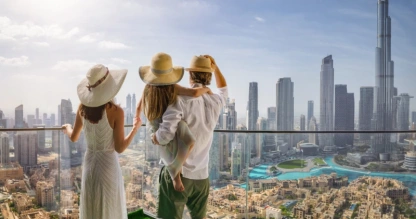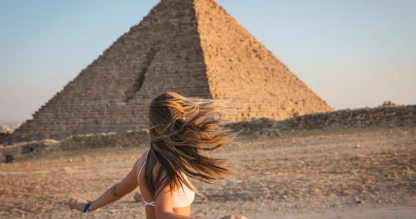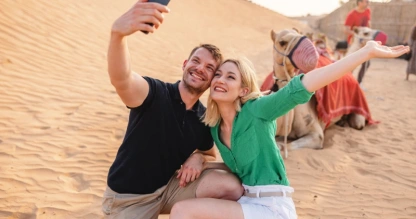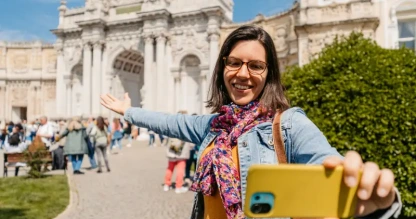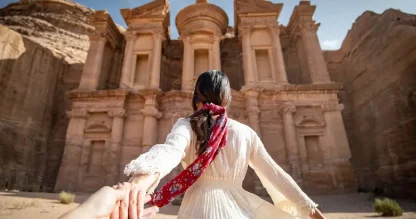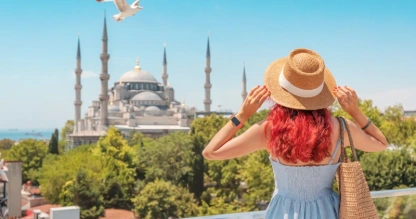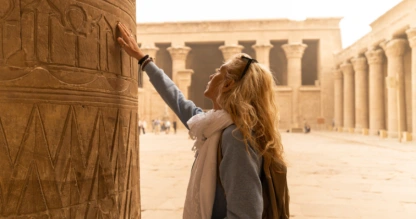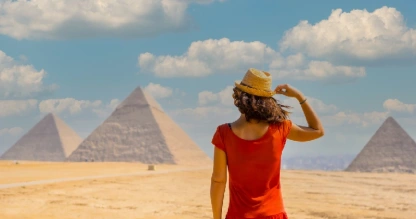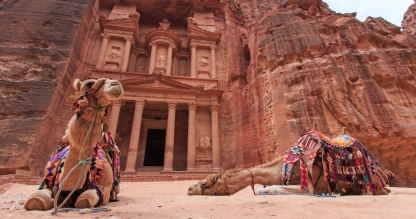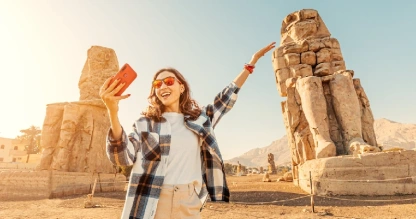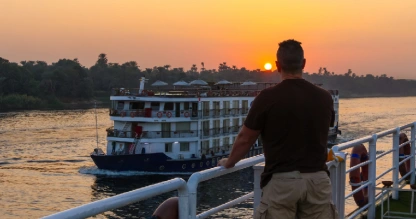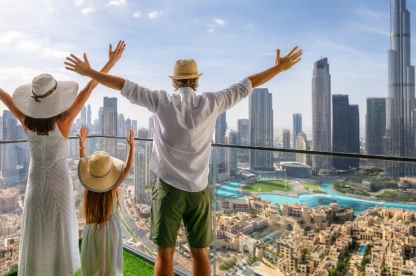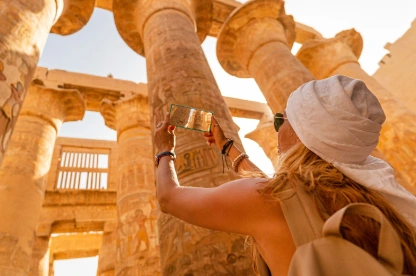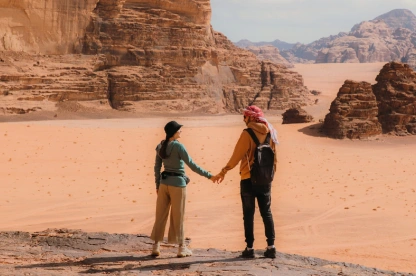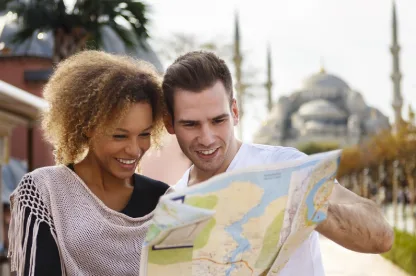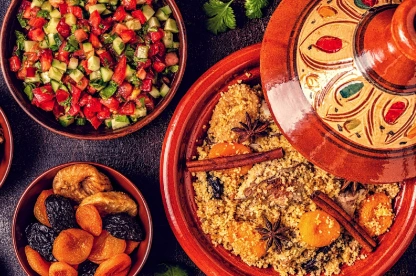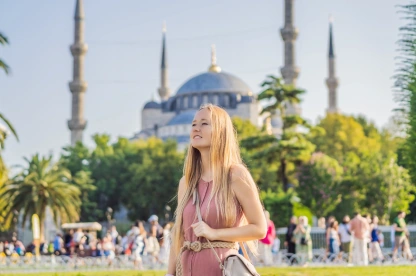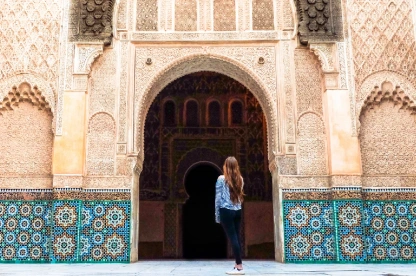Table of Contents:
Your Full Guide to the Wonders of Egypt
Egypt captivates with ancient marvels that defy time. The Great Pyramid of Giza still rises as one of the top wonders of Egypt and a powerful symbol of engineering genius. Along the Nile, travelers encounter iconic places to visit in Egypt, from the mystical Sphinx and royal tombs of the Valley of the Kings to towering columns at Karnak and the preserved beauty of Philae and Edfu Temples.
This land of pharaohs offers more than monuments, it tells the story of a civilization that shaped history. Let this guide lead you through the wonders of Egypt, where every stone holds a story waiting to be discovered.
Ancient Wonders of Egypt
Egypt's wonders spring from desert dunes as colossal witnesses to the ingenuity of a bygone civilization. From holy temples to the Great Pyramid, the awe-inspiring monuments leave tourists agog at their scale and engineering skill. Each block utters a word that is timeless, durable, and deeply human. Our Egypt tours offer a front-row seat to this astonishing legacy, taking travelers deep into the heart of one of history’s most iconic civilizations.
The Great Pyramids of Giza
The Great Pyramids of Giza tower spectacularly from the desert on the outskirts of the chaos of Cairo. These huge structures are some of the most vivid visions of Egypt. The largest one, built for Pharaoh Khufu, is a demonstration of pure precision and magnitude, consisting of millions of limestone bricks.
The smaller pyramid of Khafre and the more modest pyramid of Menkaure lie close by, completing this ancient trinity. Their vastness and perfect symmetry are testaments to the Egyptians' deep understanding of engineering, astronomy, and geometry. A trip to the pyramids is a must for anyone finding out about the best places to see in Egypt.
The Great Sphinx
Lying next to the pyramids, the Great Sphinx quietly gazes out over the plateau, its cryptic face cut directly from limestone bedrock. With the body of a lion and the face purported to be that of Pharaoh Khafre, the Sphinx ranks as one of Egypt's greatest mysteries.
Having lain buried for centuries in desert sand, it was eventually unearthed and revealed signs of fine details indicating a once-painted, richly adorned monument. Its sheer size and mythological status make it a staple among Egypt's ancient monuments.
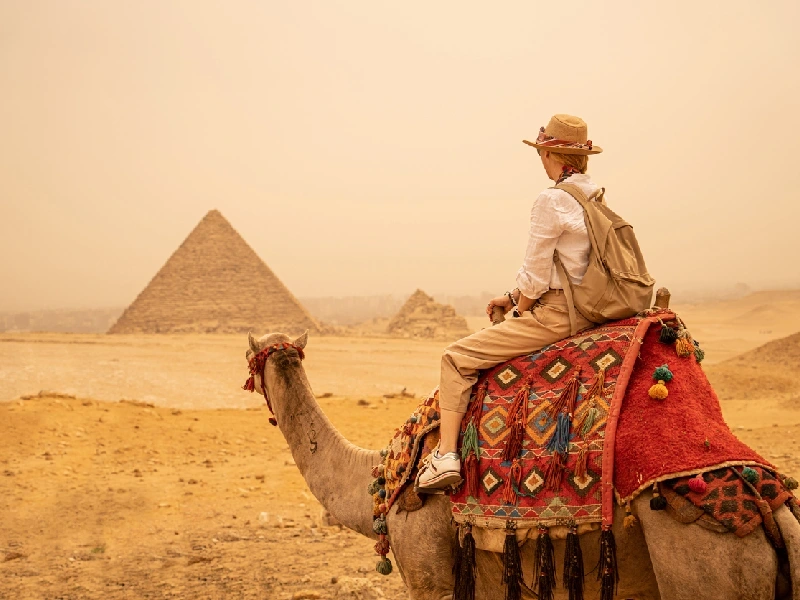
Valley of the Kings
Nested deep within the Luxor west bank cliffs, Valley of the Kings was the necropolis for the New Kingdom's pharaohs. This sacred cemetery contains more than 60 well-decorated tombs, including that of the famous boy-king Tutankhamun.
Unlike above-ground pyramids, these tombs were actually carved deep within the hills to protect royal loot from thieves. The vivid paintings on the walls inside depict the journey through the afterlife, making the valley one of the most spiritually and artistically rich places in Egypt.
The Step Pyramid of Djoser
Even before the Giza pyramids, the Step Pyramid of Djoser was already changing the face of Egypt. Constructed in Saqqara, this fantastic building was the very first pyramid to be made of stone. It`s designer, Imhotep, came up with it by placing six mastabas (flat-roofed tombs) of decreasing height.
Encircling the pyramid is a big ceremonial complex surrounded by a limestone wall. One of Egypt's original and most inventive marvels, the Step Pyramid remains an iconic representation of preliminary architectural skill and imperial heritage.
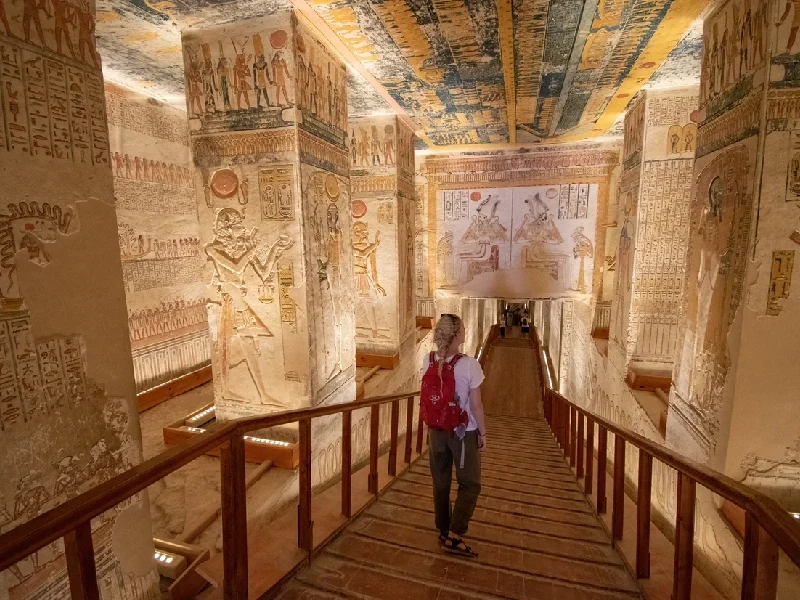
Temples and Monuments Across the Nile
Along the sacred waters of the Nile loom gigantic temples that chronicle Egypt's history of religion in stone. These architectural phenomenons, which burst forth from riverbanks that nurtured civilization for millennia, chart the spiritual consciousness of ancient Egyptians during different dynastic periods.
Karnak and Luxor Temples
Among the most striking wonders of Egypt, Karnak Temple is a gigantic religious complex near Luxor, which was once the place of spiritual focus of ancient Thebes.
With colossal pillars and sacred rooms, the Hypostyle Hall alone takes visitors breathless—its 134 colossal pillars form a grove of stone, an unmatched feat in architecture and metaphor.
Connected by the Avenue of Sphinxes, Luxor Temple is to the south. The temple wasn`t built for gods, but for the divine essence of royalty itself. It's one of the best places to visit in Egypt, blending history, ceremony, and even Islamic heritage, with a functioning mosque built into its walls.
Abu Simbel Temple
Abu Simbel Carved into a Nubian cliffside, Abu Simbel is Ramses II’s monumental tribute to his reign and divinity. Four colossal statues of the pharaoh guard the entrance, each one a powerful symbol of royal authority and religious devotion.
Sunlight penetrates the inner temple of the temple every two years, bathing the statues of Ramses and the gods—a testament to ancient Egypt's astronomical prowess. Among the wonders of Egypt, Abu Simbel's survival is a modern marvel, having been relocated stone by stone to prevent rising waters from the Aswan Dam.
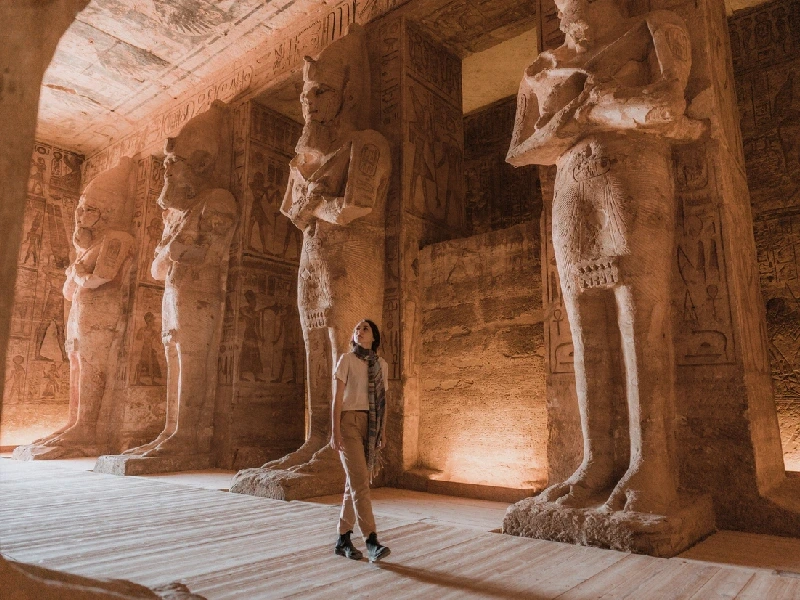
Temple of Philae
Dedicated to the goddess Isis, Philae Temple remained an active shrine even after Egypt's Christianization. Its tall, thin columns and richly detailed reliefs recount tales of divine love and resurrection. Relocated to Agilkia Island to prevent flooding, this serene complex remains one of the most enchanting places to visit in Egypt, where mythology and history echo through every carved wall. This serene complex is a must-see on any Egypt trip, where mythology and history echo through every carved wall.
Edfu Temple
Edfu Temple is one of the best-preserved glimpses into Egyptian temple tradition. Built during the Ptolemaic era, it is dedicated to Horus, the falcon god, whose triumphs are told in elaborately carved hieroglyphs on its massive walls. Its remarkable condition and elaborate narrative make it one of Egypt's architectural masterpieces, especially for travelers eager to understand Egypt's multi-layered religious systems.
Kom Ombo Temple
Kom Ombo Temple Sitting high on the Nile, Kom Ombo is an unusual double temple, symmetrical in design and dedicated to two deities: Sobek, the crocodile god, and Haroeris, a form of Horus. Such dual dedication was a product of the syncretism of Ptolemaic Egyptian and Greek philosophy. As one of the more unusual places to visit in Egypt, Kom Ombo also houses a fascinating crocodile mummy museum—bringing myth and ritual to life in unexpected ways.
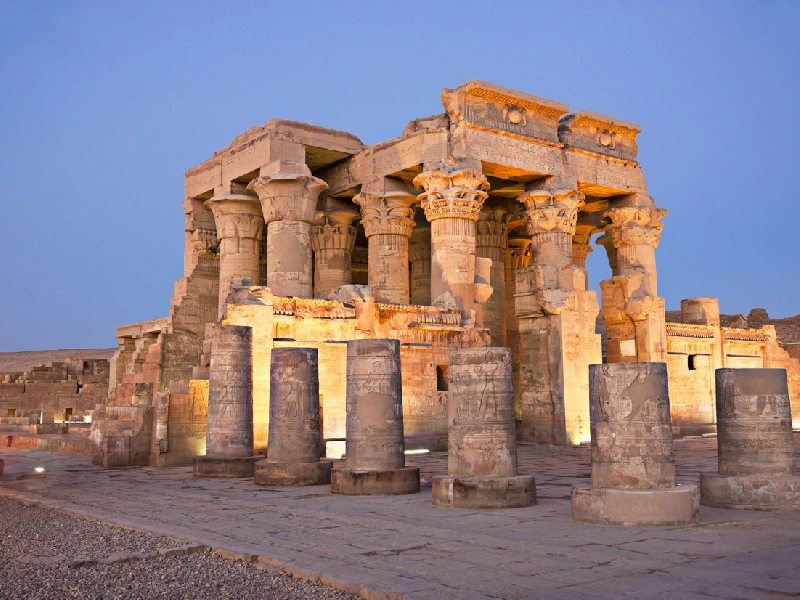
Modern Egypt: Cities, Culture, and Coastlines
Modern Egypt unfolds beyond its ancient monuments, revealing vibrant urban centers and breathtaking coastal havens that enchant contemporary travelers.
Cairo: Museums, Markets, and Mosques
One of the top places to visit in Egypt is Cairo, where ancient treasures converge with modern life. At the Egyptian Museum, in Tahrir Square, some of Egypt's most beautiful wonders are waiting for you, such as the golden mask of Tutankhamun.
Close by, a hill climb away, the Muhammad Ali Mosque crowns the Citadel, showcasing stunning Ottoman architecture and city views. For a dip into local culture, Khan el-Khalili bazaar invites you into a spice-scented labyrinth of jewelry and handmade trinkets in an atmosphere that has remained alive since the 14th century.
Aswan and Nubian Heritage
Aswan is Egypt's gate to the south and window on Nubian civilization. It's one of Egypt's calmer but most satisfying destinations, especially for the culturally inclined and history buff. Aswan is renowned for the dramatic re-siting of Abu Simbel and Philae—the very treasures of Egypt saved from flooding. Colorful Nubian villages, village crafts, and traditional architecture attest to a resilient culture that endures to this day.
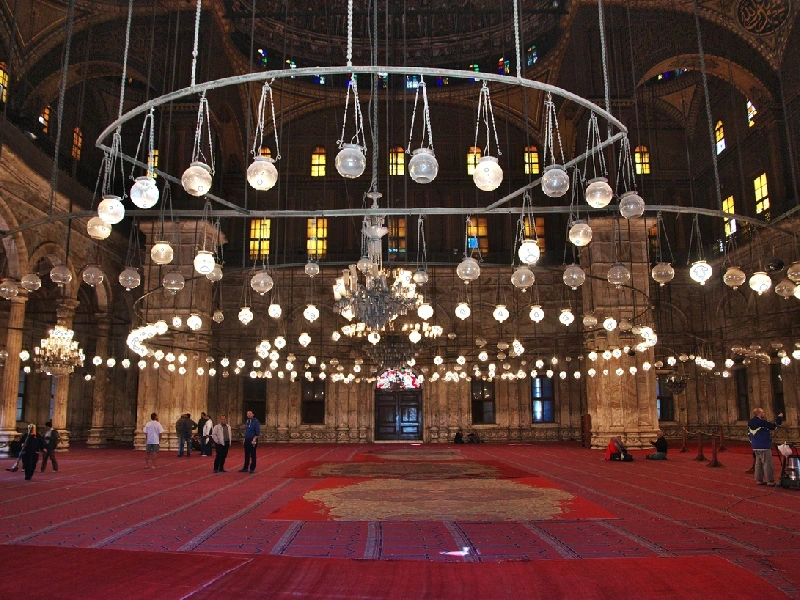
The Red Sea Riviera: Sharm El Sheikh and Hurghada
The Red Sea coastline is Egypt's paradise on earth for divers and beach lovers both. Sharm El Sheikh and Hurghada are stunning sites in Egypt with luxury resorts, crystal water, and vibrant coral reefs. Ras Mohammed National Park, one of Egypt's submerged gems, preserves dazzling ecosystems of exotic fish, reef sharks, and undulating rays—hence not to be missed for underwater fans.
Alexandria: A Blend of Egyptian and Greek History
One of the great centers of the ancient world, Alexandria remains an interesting mix of cultures. It's one of the few places in Egypt where Greek, Roman, and Egyptian histories converge.
The Citadel of Qaitbay sits on the location of the Lighthouse of Alexandria—one of Egypt's original Seven Wonders. Make sure to visit the new Bibliotheca Alexandrina, a gesture to the city's past as a center of learning and creativity.
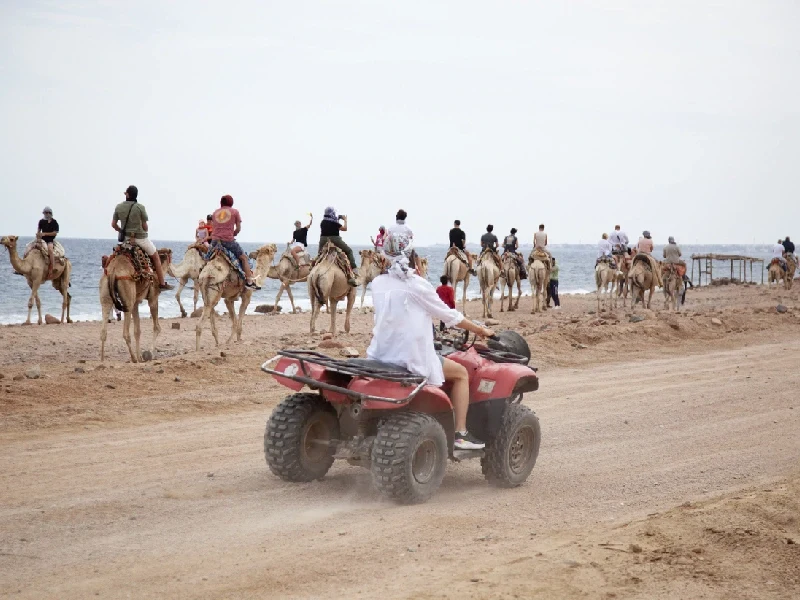
Planning Your trip to Egypt
Thoughtful preparation enhances every Egyptian journey, allowing travelers to immerse themselves fully in this timeless landscape where ancient monuments stand against desert backdrops.
Best time to visit in Egypt
Egypt welcomes visitors most warmly between October and April, when monuments are bathed in golden light without the furnace-like heat of summer sun. During these nice months, temperatures range from 66°F to 88°F, ideal to explore stone temples and tombs that would otherwise be oven-like.
December and January are peak tourist seasons, and archaeological sites are swarming with fans from across the globe. Summer months reveal a different Egypt. May to September, southern towns like Luxor and Aswan tend to endure temperatures over 100°F, but these months have their own benefits—chiefly thinner crowds, reduced accommodation rates, and coastlines where Mediterranean breezes temper the heat.
September is an especially worthwhile time, offering moderate temperatures with fewer visitor numbers at major attractions.
Visa, currency, and language tips
Egyptian authorities have streamlined entry procedures for most foreign visitors, who can get an electronic visa in advance or pay around $25 USD for a single-entry 30-day tourist visa at the border. Applicants must present their passport (valid for at least six months), completed application with photograph, and confirmation of travel arrangements.
While the local currency is Egyptian Pound, American dollars are widely accepted in tourist facilities. Payment by electronic means is now highly prevalent, and most archaeological sites now demand payment by card alone.
Health, safety, and local etiquette
Medical preparation would include verifying standard vaccinations have been verified, and health authorities would usually recommend hepatitis A protection. Egyptian attire expectations are still traditional despite the tourism present.
Female tourists need to wear clothing that covers the chest, knees, and shoulders, and male tourists should also avoid shorts particularly when visiting religious sites or rural villages. Women need to cover their hair when visiting mosques, and footwear needs to be removed by all visitors prior to gaining access to such sanctuaries.
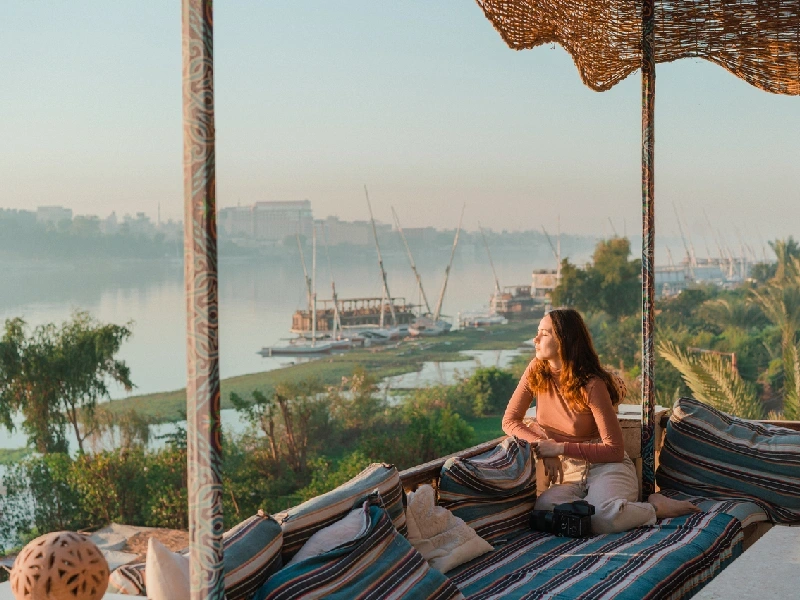
Frequently asked questions
Q1. Which of the 7 wonders is in Egypt?
The Great Pyramid of Giza is the only remaining of the original Seven Wonders of the Ancient World and remains one of the most iconic wonders of Egypt. Located just outside Cairo, it continues to amaze visitors with its size, precision, and mystery.
Q2. What are places to visit in Egypt?
From the majestic temples of Luxor to the timeless Nile and the Red Sea resorts, there’s no shortage of breathtaking places to visit in Egypt. Must-see highlights include the Great Pyramids, the Valley of the Kings, Abu Simbel, and the vibrant markets of Cairo.
Q3. What is the best month to travel to Egypt?
The ideal time to visit Egypt is between October and April when temperatures are milder, making sightseeing more comfortable, especially around ancient sites and desert regions.
Q4. What do you need when travelling to Egypt?
Travelers should bring a valid passport, visa (which can often be obtained online or on arrival), sunscreen, comfortable walking shoes, and modest clothing suitable for religious sites. It's also recommended to carry local currency for small purchases.
Q5. What can tourists wear in Egypt?
Tourists are advised to dress modestly, especially when visiting mosques or rural areas. Lightweight, breathable clothing that covers shoulders and knees is ideal. Swimwear is acceptable at resorts, but not in public or city areas.
Ready to explore Egypt and the best destinations in the Middle East? Book your Egypt tour now!
Find Other Blogs
Explore the 10 best things to do in Dubai, from world-famous sights and thrilling adventures to unique cultural experiences for every type of traveler.
Explore the best destinations in Middle East, from ancient wonders to modern marvels, perfect for culture lovers, adventure seekers, and beach fans alike.
Explore the timeless wonders of Egypt, from ancient pyramids to majestic temples, in this ultimate guide to the country’s most iconic sites.
Explore the magic of Wadi Rum, Jordan’s desert gem filled with red sands, towering cliffs, and unforgettable Bedouin adventures.
Get ready for your trip with these essential Turkey travel tips, covering culture, food, key sights, and must-know advice for first-time visitors!
Discover the rich flavors of Moroccan cuisine: tajines, couscous, street bites, and sweet treats you won't want to miss!
Discover the best beaches in Greece, from hidden gems to iconic shores, on unforgettable Greece tours filled with sun, sea, and stories.
Discover the most visited places in Istanbul, including top sites, historic landmarks, and must-see spots in this vibrant city.
Experience the thrill of a Dubai desert safari with dune bashing, camel rides and sunset views in one unforgettable adventure.
Explore the imperial cities of Morocco, Fez, Marrakesh, Rabat, and Meknes and experience rich history, culture, and stunning architecture.

